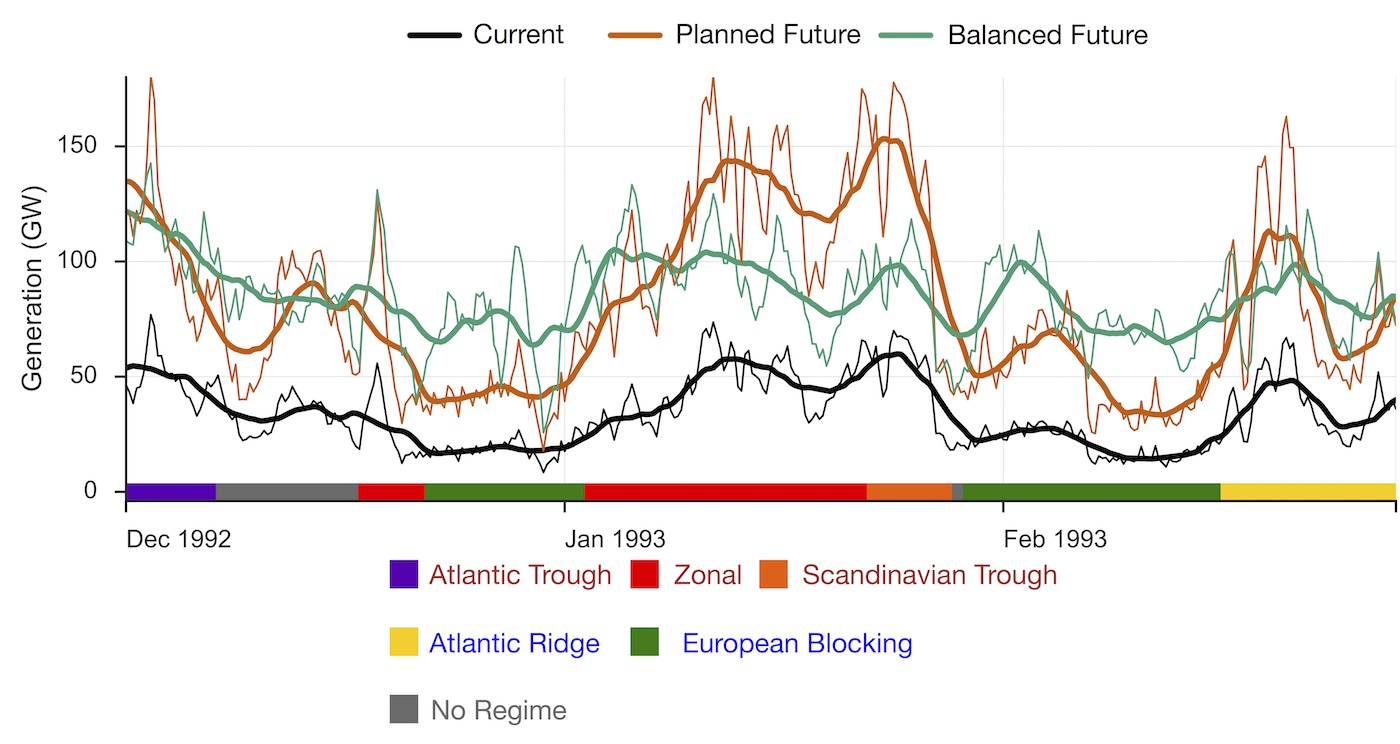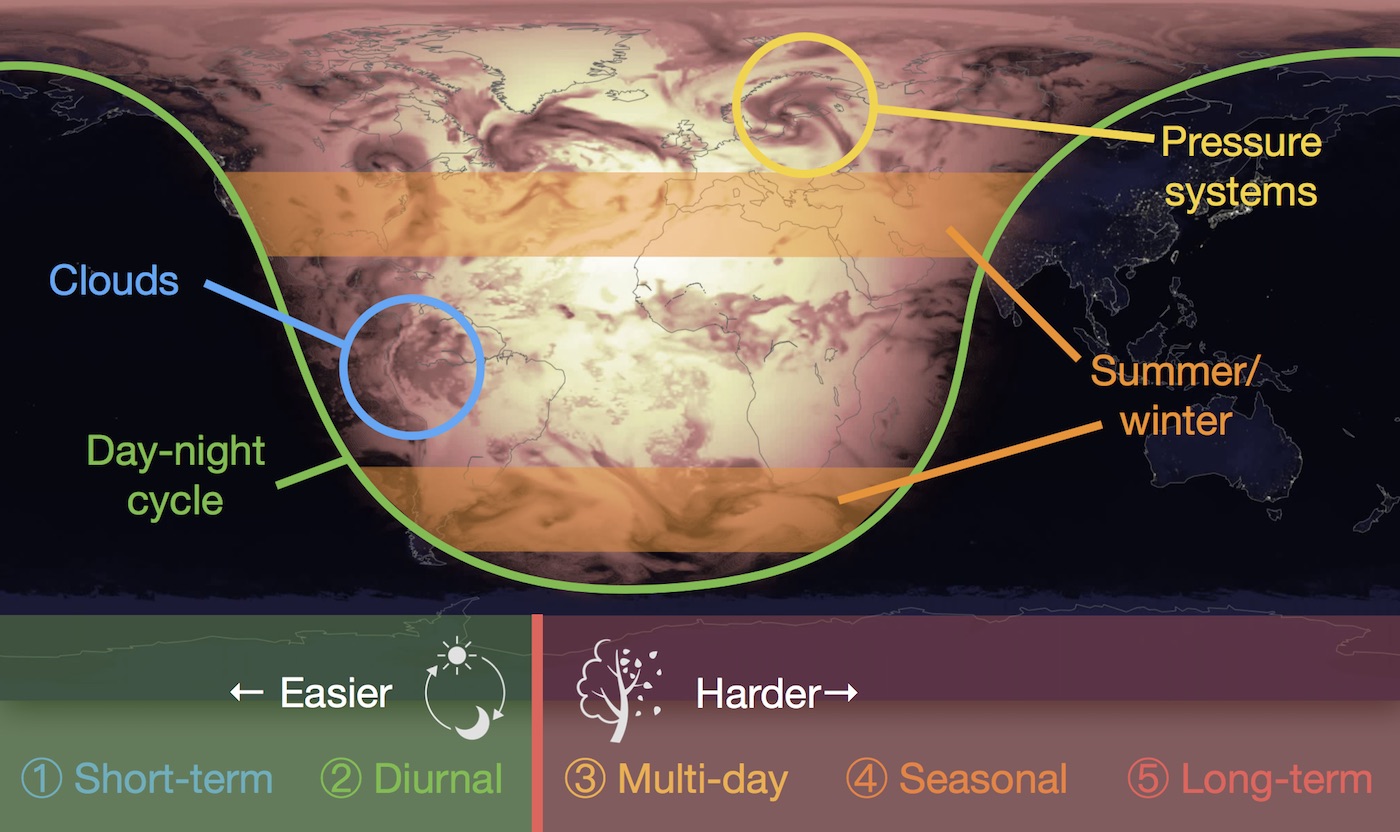In a paper published in Nature Climate Change, we used a combination of a meteorological understanding of weather regimes and our Renewables.ninja wind and PV generation time series to show that by smart spatial deployment of future wind farms, based on our knowledge of weather regimes, it is possible to keep the European wind fleet’s multi-day variability to levels the power system is already dealing with today.

Time series of six-hourly European wind power output, assuming historical weather conditions from winter 1992-93. The thin lines are 6-hourly generation while the bold lines show the 5-day running mean. The shaded area on the x-axis shows the currently active weather regime. Based on the data reported in Grams et al. 2017
Why is this important? In the figure above, the thick lines are the 5-day moving averages. In simple terms, we could say that is the kind of variability not easily handled by adding storage such as batteries to the system.
It is well-known that the variability of renewable power generation happens on different scales - ranging from seconds and minutes to days, seasons, and years:

Scales of variability of solar power (from a talk I gave at the University of Geneva, 19th May 2017)
The time scales longer than a few days are critical for higher penetration of renewable generation, but still poorly researched. Our study provides some confidence that we can balance multi-day fluctuations quite well, even without requiring large amounts of storage.
The study’s main author Christian Grams has written a much more extensive post on the results.
The research has been covered amongst other places in the Guardian, Spiegel Online, on Swiss Public Radio, and on Ars Technica.
The full paper is available on the Nature Climate Change website.